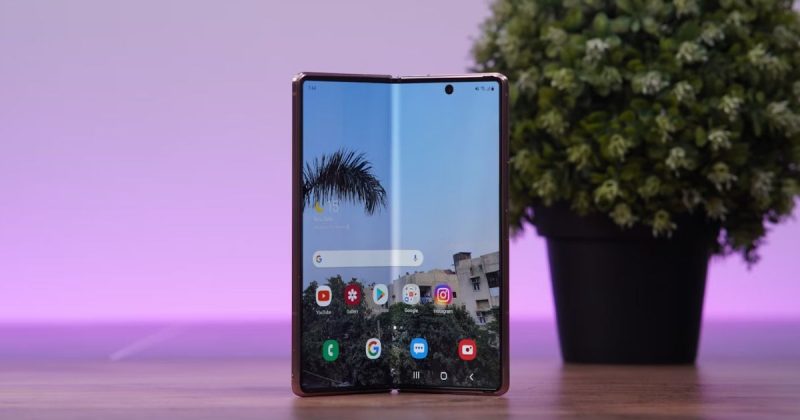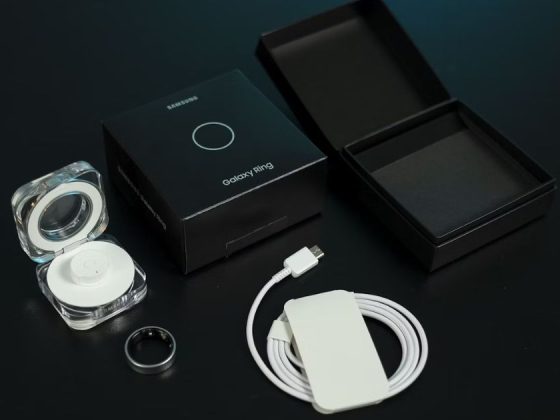Foldable smartphones have revolutionized the mobile industry, offering larger screens in a compact design. Devices like Samsung’s Galaxy Z Fold and Flip series and Motorola’s Razr introduced a new way to interact with smartphones, challenging the traditional flat design.
However, early foldables faced durability issues, weak hinges, and software limitations, keeping them more of a niche product. However, with foldable smartphones 2.0, these challenges are being effectively addressed. The next generation promises sleeker designs, enhanced durability, improved multitasking, and a refined user experience, pushing the boundaries of mobile computing.
The Promise of Foldable Technology
Foldable smartphones appeal immensely to users seeking more versatility and functionality from their devices. The ability to combine a compact phone with a larger screen offers a multitude of possibilities. Whether having more space for multitasking, enjoying a richer media experience, or enjoying the convenience of a device that transforms based on your needs, foldables promise to change how people use their mobile devices.
Foldable technology is expanding the possibilities of mobile computing. With larger, foldable screens, users can seamlessly manage multiple apps, enjoy a more immersive gaming and media experience, and create a mobile office environment without additional devices. This marks only the beginning, as the evolution of foldable phones continues to transform interactions with mobile technology.
Discover Foldable Smartphones 2.0: Design Meets Function
1. Sleeker and More Durable Designs
- Design Evolution: Foldable smartphones 2.0 are a testament to the rapid evolution of mobile technology. Manufacturers have learned from the early iterations, resulting in sleeker, more refined designs that feel less bulky while still providing large displays. The design philosophy now focuses on making foldable functional, stylish, and premium. The slimmer profiles of upcoming foldables contribute to their portability, while the materials used in construction are increasingly high-end. Manufacturers opt for more luxurious finishes, incorporating materials like brushed metals and textured glass, which provide a better feel and appearance. These improvements ensure that foldables are functional and desirable in terms of design.
- Material Innovation: Advancements in material science have played a key role in developing foldable smartphones 2.0. One of the most significant breakthroughs has been the introduction of ultra-thin glass (UTG). This is a key material for foldable screens, providing better durability than the plastic screens used in early foldable phones. UTG is more resistant to scratches and offers a smoother, more refined touch experience. Additionally, flexible OLED screens, which allow the device to bend without breaking, continue to improve, offering enhanced clarity, colour accuracy, and durability. Another innovation in foldable materials is the use of flexible polymers. These polymers provide a more durable solution, minimizing the risk of cracks and creases. The combination of these materials contributes to more robust and long-lasting foldable phones, ensuring that consumers can enjoy their devices for years to come without worrying about rapid wear and tear.
- Hinge Technology: The most critical aspect of foldable phones is the hinge mechanism. In the first generation, the hinge was often the weak point, leading to screen issues and malfunctioning over time. In foldable smartphones 2.0, manufacturers have refined hinge technology significantly. With better engineering and more durable materials, the new hinges allow for smoother folding and unfolding, resulting in a more robust device. These improved hinges also offer longer lifespans, reducing the likelihood of wear that leads to issues like screen folding problems. The focus is on creating mechanisms that last longer and allow for a seamless user experience, with precise and smooth action every time.
- Water and Dust Resistance: Water and dust resistance are essential for the broader adoption of foldable smartphones, ensuring durability in everyday use. Early foldables were vulnerable to environmental damage, which limited their appeal to users who needed a phone that could withstand daily wear and tear. However, the next generation of foldable devices will incorporate IP ratings for dust and water resistance, providing consumers with added durability and peace of mind. Introducing water and dust resistance will be essential for users who want to take their foldables to work, travel, or other environments where exposure to the elements is possible. By ensuring that foldable devices can withstand splashes, spills, and dust, manufacturers will make these devices more practical for everyday use.
2. Display and Screen Technology Advancements
- Improved Foldable Screens: The most significant improvement in foldable smartphones 2.0 is the display. Foldable screens are improving in almost every way, from resolution to refresh rate to pixel density. The next generation of foldable will boast higher-resolution screens that provide stunning visuals, sharper text, and more vibrant colours. As consumers demand better visual experiences, foldable phones will rise with OLED and MicroLED screens that deliver crisp and clear content. In addition to higher resolution, the refresh rates of foldable displays are also improving. High refresh rate displays, essential for smooth scrolling and responsive touch input, will become a standard feature in foldable phones. With refresh rates up to 120Hz or higher, foldables will provide a more fluid and enjoyable experience, whether browsing, gaming, or watching content.
- AMOLED vs. OLED vs. MicroLED: As the foldable market matures, manufacturers explore different display technologies to enhance the user experience. AMOLED and OLED displays are now standard features in many foldable smartphones. Still, MicroLED is a newer technology that promises even better colour accuracy, higher brightness levels, and improved energy efficiency. AMOLED and OLED displays are renowned for their deep blacks and vibrant colours, making them ideal for foldable devices where screen quality is essential. In comparison, MicroLED delivers superior contrast ratios and improved energy efficiency. As foldable devices continue to evolve, the adoption of MicroLED displays is expected to increase, providing users with a more premium visual experience.
- Multiple Screen Formats: While the traditional foldable designs (clamshell and book-style) dominate the market, foldable phones 2.0 will push the envelope with new screen formats. Manufacturers are experimenting with tri-fold and even rollable screens, expanding the possibilities of how foldable devices can be used. A tri-fold design, for example, could allow for an even larger screen without compromising portability. These new screen formats will enhance the multitasking experience and offer more media consumption and gaming options, creating more immersive mobile device experiences.
- Durability of Screens: Making foldable screens more durable remains a critical concern for manufacturers. As technology improves, the next generation of foldable smartphones will feature screens less prone to creases and scratches. This is due to innovations in screen technology, including better glass materials and more advanced coating methods that protect the screen from wear and tear. With these advancements, foldable phones will continue to become more practical for everyday use, ensuring that users can enjoy the benefits of a large screen without worrying about the device’s durability.
3. Enhanced Multitasking and Productivity Tools
- Multitasking Capabilities: With larger, foldable screens, multitasking has become a central feature of the foldable experience. The ability to open multiple apps side-by-side or even run apps in pop-up windows has transformed how users interact with their devices. Whether it’s working on a document while browsing the web or managing several social media accounts at once, foldables offer a productivity level that traditional smartphones cannot match. Foldable devices also allow for better app continuity. Apps can seamlessly transition from one screen to another as the device folds and unfolds, creating a more fluid user experience and eliminating the clunky transitions that were common in earlier foldable models.
- Split-Screen Functionality: One of the most significant enhancements in foldable smartphone 2.0 is the improvement in split-screen functionality. This allows users to run two apps simultaneously on a larger screen, making it easier to work, shop, or multitask. With foldables, users can drag and drop content between apps, take advantage of larger displays for detailed views, and access multiple tools simultaneously. Android has already optimized its software for split-screen functionality, and with Foldable 2.0, even more powerful productivity tools are expected. Whether managing Google Docs and Gmail side by side or watching a video while responding to messages, split-screen capabilities enable users to accomplish more without constantly switching between apps.
- App Continuity: App continuity is a standout feature in foldable smartphones 2.0. In earlier models, switching from a smaller screen to a larger one could be disjointed. The next generation will offer seamless transitions, allowing apps to pick up right where users left off, whether unfolding to access a larger display or folding back for a more compact form. This advancement will enhance the user experience and improve multitasking efficiency.
- Software Customization for Productivity: Foldable smartphones 2.0 are becoming more tailored for productivity, with custom software tools like Samsung DeX offering desktop-like experiences. These tools allow users to connect their foldables to external displays or use the device as a hub for managing presentations and content creation. The convergence of smartphone and computer technology in foldables presents exciting opportunities for work and play.
4. Battery and Charging Advancements
- Optimized Battery Life: Foldable phones 2.0 are designed with longer battery life, addressing one of the major pain points of earlier foldables. The larger screen sizes require more power, but new battery technologies and power-efficient processors have been developed to ensure that foldable devices remain usable throughout the day without constant charging. As foldable designs advance, devices are expected to feature improved battery optimization and performance, with enhanced support for fast charging and longer battery life cycles.
- Fast Charging and Wireless Charging: The next generation of foldable smartphones will also offer faster charging capabilities. Integrating faster charging technologies will allow users to quickly top up their devices, minimizing downtime. Wireless charging, previously a rarity in foldable phones, is also becoming more common, making it easier to charge foldable phones without needing to plug in cables.
- Power Efficiency: In addition to better battery management, foldable smartphones 2.0 will also use power-efficient processors and software optimizations to help extend battery life. These improvements will help keep devices running longer without sacrificing performance.
5. Software and User Experience Enhancements
- Tailored Operating Systems: To take advantage of the foldable form factor, both Android and iOS are improving their operating systems. This includes UI and UX changes, such as optimizing screen layouts for multi-app views and enabling app continuity. Both platforms are evolving to make folding smartphones more intuitive and user-friendly, with added support for gestures and touch controls that take advantage of the unique form factor.
The Need for Improvement
While foldable phones have undoubtedly disrupted the smartphone industry, several challenges have been overcome. Early foldable phones faced significant durability issues, including fragile screens, visible creases, and unreliable hinge mechanisms. These shortcomings prevented foldable phones from becoming mainstream products for many users.
Moreover, the software experience was often less than ideal. Many apps weren’t optimized for the unique folding form factor, meaning users didn’t always experience the promised benefits. Battery life was another area where foldables struggled, given the trade-off between larger screens and compact form factors. However, with advancements in materials, design, and software, foldable 2.0 is poised to address these issues, offering more durable devices with better performance and longevity.
Foldables 2.0: The Dawn of a New Mobile Era
Foldable smartphones 2.0 are redefining mobile technology. With sleeker, more durable designs, enhanced multitasking capabilities, and improved software optimizations, the next generation of foldable devices is pushing the limits of mobile computing. As these devices continue to evolve, they are set to become even more integral to daily life, offering new possibilities for productivity, entertainment, and seamless integration across various digital ecosystems.





